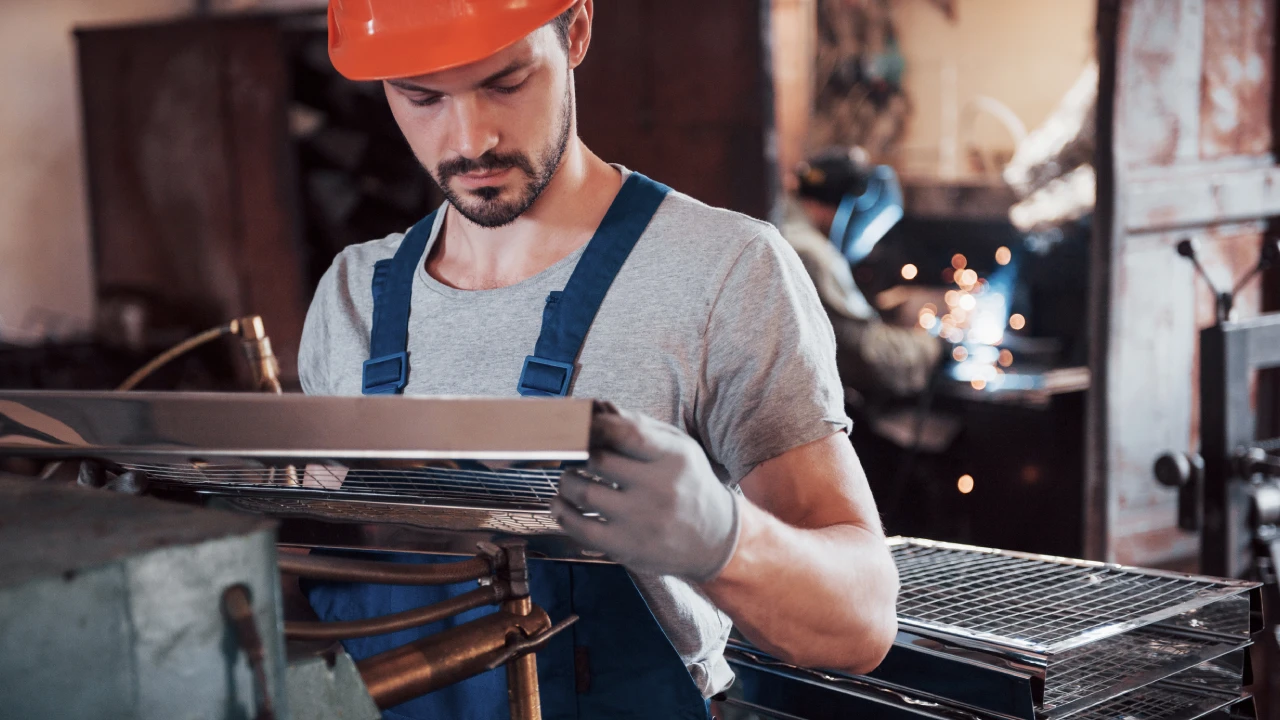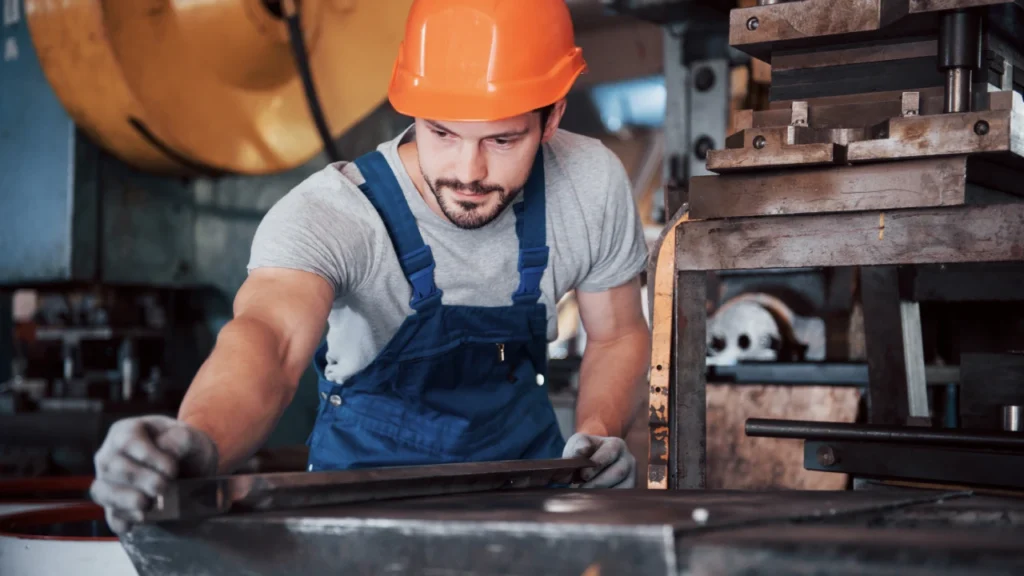Don't miss our special offers - Contact Us Now!

The Evolution of Clinching in Metal Fabrication: From Rivets to Robotics
The evolution of clinching in metal fabrication has reshaped how industries approach sheet metal joining—offering a cleaner, faster, and more cost-effective alternative to traditional welding.
What began as a simple mechanical fastening technique has grown into an advanced process integrated into high-speed production lines.
Today, manufacturers across automotive, HVAC, and appliance sectors are embracing clinching to meet sustainability and productivity goals.
At ClinchSystems, this transformation is at the core of every solution offered.
Early Days of Clinching in Metal Fabrication
Clinching began as a mechanical solution for joining sheet metal without heat or additional materials.
Its roots date back to the mid-20th century, when manufacturers sought alternatives to traditional fastening methods like riveting, bolting, and welding, especially for thin-gauge materials.
Unlike welding—which requires high energy, fumes control, and skilled labor—early clinching relied on localized plastic deformation, pressing sheets together to form a durable interlock.
This method proved ideal for environments with limited access to complex equipment or welding safety infrastructure.
The simplicity of the process—no sparks, no consumables, no surface prep—made clinching appealing to sectors such as HVAC, electronics, and low-volume automotive parts.
It allowed faster cycle times and fewer safety hazards, laying the groundwork for broader adoption as production demands increased.
Key differentiators between early clinching and conventional joining included:
- No thermal input (unlike spot welding)
- Fewer material distortions or burn-throughs
- No need for pre-drilled holes (as with rivets)
- Cleaner joints with minimal surface disruption
This mechanical joining innovation offered a glimpse of the modern factory’s future—leaner, safer, and more efficient.
The Shift to Non-Welded Joining Methods
The manufacturing industry has gradually pivoted from traditional welding techniques to non-welded joining methods—with clinching emerging as a primary alternative.
This shift was driven by a combination of safety regulations, environmental mandates, and cost-efficiency pressures.
Welding, though effective, introduces a range of operational challenges: worker exposure to fumes, fire hazards, intensive training requirements, and high energy consumption.
As a result, regulatory bodies like OSHA introduced stricter welding safety regulations, pushing manufacturers to seek safer and leaner solutions.
Clinching addressed these challenges directly. It eliminates heat, sparks, and surface damage—allowing assembly in non-weldable or coated metals without compromising strength. It also reduces equipment complexity, lowers energy usage, and speeds up production cycles.
Compared to spot welding, clinching offers consistent joint quality without surface prep, making it ideal for high-volume, automated production environments.
From a cost perspective, clinching reduces the need for consumables and rework, offering substantial assembly cost reductions over time.
Sustainability also plays a role: no fumes, no spatter, and less energy align with green manufacturing goals.
This systemic shift is visible across sectors—from automotive to electronics—where replacing welding in sheet metal assembly is no longer an experiment but a strategic upgrade.
Technological Innovations in Clinching Systems

Clinching has evolved from a purely mechanical method into a digitally optimized, high-precision process, thanks to advances in automation, robotics, and material science.
Today’s clinching systems integrate seamlessly with smart factories, offering programmable force control, sensor feedback, and real-time quality monitoring—turning what was once manual into a scalable, repeatable solution.
Robotic clinching systems now perform high-speed operations on complex geometries with micron-level accuracy.
These systems are programmable for different materials and thicknesses, reducing human error and maximizing production uptime.
Manufacturers can also tailor custom clinching solutions to suit specific product lines, materials, or structural requirements—whether in automotive battery enclosures or HVAC ducts.
The ability to join dissimilar metals, such as aluminum to steel, further demonstrates the versatility of modern clinching.
This is critical in lightweighting strategies, where traditional welding often fails due to metallurgical incompatibility.
Backed by sensor integration, force monitoring, and adaptive control algorithms, advanced clinching technologies are now part of the Industry 4.0 toolkit—offering not just speed, but traceability, reliability, and integration with MES and ERP systems.
Industry Applications Driving Adoption
Clinching has gained widespread traction across multiple industries due to its efficiency, material flexibility, and lower lifecycle costs.
Sectors such as automotive, HVAC, and appliance manufacturing are rapidly adopting clinching systems to streamline production, meet regulatory demands, and enable new product designs.
In the automotive sector, clinching enables the assembly of lightweight body panels, EV battery enclosures, and aluminum-steel hybrid structures.
It supports lightweighting in auto manufacturing without compromising strength or crash performance—making it a key technology in the shift toward electric and fuel-efficient vehicles.
The HVAC industry uses clinching to join galvanized and coated sheet metal components in ducts, housings, and ventilation assemblies.
It avoids thermal distortion and eliminates post-processing, making it ideal for HVAC engineering standards that require precision and durability.
Appliance manufacturers benefit from fast, clean assembly of internal frames, enclosures, and sheet metal shells.
The process reduces visible surface defects, ensuring a more polished consumer product while also cutting down on energy and tooling costs.
Beyond these, clinching has also expanded into electronics, aerospace interiors, and custom machinery—proving its adaptability and relevance in modern manufacturing.
Case Studies and Real-World Performance
Manufacturers evaluating clinching technologies increasingly rely on real-world data and proven case studies to validate their investment.
Across industries, companies report measurable improvements in production time, joint durability, cost efficiency, and environmental compliance.
In documented clinching success stories, automotive manufacturers reduced assembly time by up to 30% while improving structural integrity in crash-tested panels.
HVAC producers saw up to 40% fewer rejects thanks to consistent joint quality—even on coated or pre-painted metals.
Appliance manufacturers reported enhanced surface finish and faster integration into automated lines.
Through clinched joint performance testing, engineers have confirmed high shear and peel strength values, especially when joining aluminum and high-strength steel.
This performance is repeatable, monitored via force-displacement curves, and adaptable across various tooling setups.
Direct user experiences with clinching further validate these findings—highlighting not just technical performance but practical impacts like reduced operator fatigue, easier quality assurance, and minimized machine downtime.
Analysis of output and throughput data supports the scalability of clinching systems for both low and high-volume production.
Together, these data points confirm that clinching delivers long-term process stability, making it a valuable addition to lean and high-performance manufacturing strategies.
Conclusion
The evolution of clinching in metal fabrication reflects a clear shift in industrial priorities—from heat-intensive, consumable-heavy welding to safer, cleaner, and smarter joining technologies.
Across automotive, HVAC, and appliance sectors, clinching has proven itself through measurable gains in strength, efficiency, and sustainability.
Whether you’re modernizing an existing line or designing a new system, clinching offers a future-ready solution that aligns with today’s performance and compliance standards.
With advancements in robotics, smart control systems, and material compatibility, the process is more adaptable than ever.
To see how ClinchSystems can deliver a tailored, cost-effective solution for your production needs, visit our Request a Custom Quote page and speak with a specialist.
